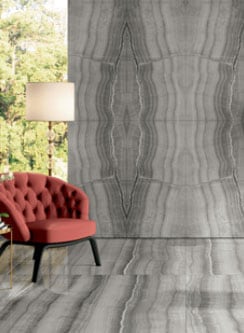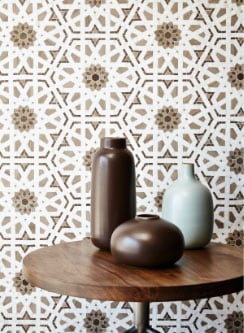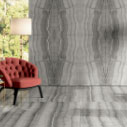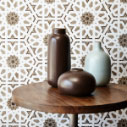
History in Porcelain
Compared to other stone and tile companies, Walker Zanger has a relatively long and storied history. Founded in 1952, Walker Zanger soon became known for introducing marble tiles to American audiences, and for innovating both production methods and the way tiles are sold.
Today, after 70 years of innovation, Walker Zanger remains the nation’s premier design resource for quality stone and tile, it is still just a brief fraction of the rich history of tile and its role in human society.
Since February 23rd is National Tile Day, it is the ideal occasion to explore the history of this decorative and versatile surface.
Born of Brick
From a historical perspective, it is important to distinguish between tile and brick, although there is an undeniable connection between the two. Bricks are considered one of the oldest building materials, having been used since at least 7,000 BC.
For several millennia, bricks were exclusive to warm weather climates, where the clay could be dried and baked in the hot sun. It was not until around 4,000 BC that Mesopotamian civilizations began firing bricks at high temperatures in a kiln, producing an ancient precursor to the ceramic tile of today.
The first known use of glazed ceramic bricks being used as decorative tiles is in the ancient Elamite settlement of Chogha Zanbil in modern day Iran. However, the most prominent example of ancient tile use didn’t appear for another three and a half millennia, when the Ishtar Gate was completed as the eighth gate of the ancient city of Babylon. The Ishtar gate featured glazed decorative relief tiles that formed images of bulls, lions, and dragons, earning it status as one of the original wonders of the ancient world.
Around the World
While the earliest examples of glazed ceramic tiles bear little resemblance to the tiles of today, kiln firing technology changed everything. It allowed tile to be made in colder climates, which facilitated the spread of tile around the world.
Notably, ceramic tiles became popularized by Roman culture, which substantially innovated the use of ceramic tiles while helping to introduce them throughout the growing Roman empire. For example, in addition to using tile in elaborate mosaic designs, the Romans also used them to protect roofs and for interior heating.
Although China has been using ceramic pottery dating back as far as 20,000 years ago, the use of ceramic tiles as building materials appears to have begun around 500 AD, around the height of the Roman empire. However, since the early Chinese had kiln technology capable of firing clay at 1,800°F since at least 2,000 BC, the culture had a substantial technological advantage.
The Birth of Porcelain
Chinese potters experimented with different ceramic materials, eventually creating an early kind of porcelain around the seventh century. Unlike clay-based earthenware, which is coarser and porous, Chinese porcelain mixed petuntse, a feldspar containing rock, with kaolin, a white Chinese clay to create a hard, glass-like translucent material.
In the 13th century, Marco Polo brought this remarkable ceramic back from his travels along the Silk Road, introducing the western world to what he called “porcellana” – referring to the Italian word for the Cowrie shell, which the white ceramic resembled in color and texture.
Porcelain from the east was highly prized, and although medieval European potters tried for centuries to reproduce it, it was not until the 18th century that they were finally able to succeed.
The New World of Tile
While clay-based earthenware tiles had been used for roofs and other building materials for centuries, porcelain was much more expensive having to be imported from the Far East. By the 16th century, plain white porcelain tiles were becoming fashionable in the homes of nobility, increasing demand throughout Europe to the New World.
Most of the tile available at the time was known as “majolica,” a kind of earthenware tile painted with a tin glazing technique. Much of it was produced in Antwerp, Belgium, until the Spanish Inquisition forced tilemakers to flee to the Netherlands city of Delft. There, they began mass-producing the tiles known as “delftware,” which presented a more affordable option to the expensive porcelain tiles imported by the Dutch East India Trading company.
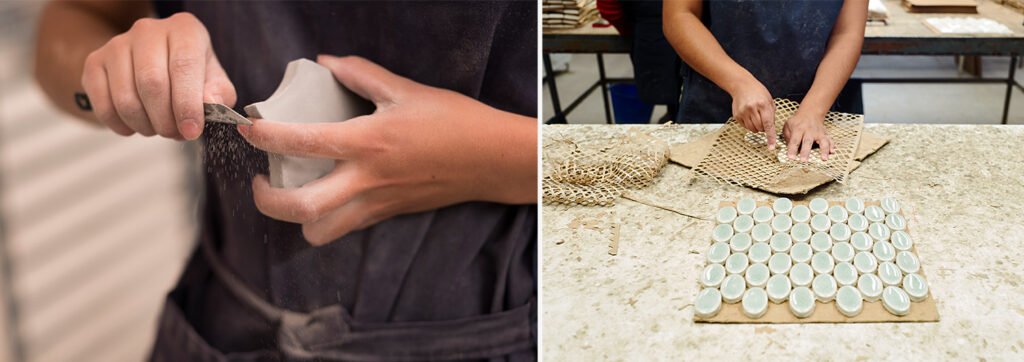
The Modern Era
The introduction of affordable, porcelain-like tiles was a revelation for tile-makers everywhere, as it opened up broad new markets and sparked further innovation. Transfer-printing techniques popularized in Victorian England gave fresh life to decorative tile, just as the introduction of modern plumbing created a new market for using tile in bathrooms and kitchen areas.
The rise of European tile manufacturing in the Netherlands, Spain, Portugal, and Italy soon broke China’s dominance of the world’s porcelain market. This allowed innovative modern techniques to develop and evolve, resulting in the high-tech porcelain tiles available today.
Similarly, modern quarrying and stone cutting techniques have allowed natural stone tiles to gain prominence in contemporary design. Innovations such as the modern mosaic tile, in which smaller tiles are pre-arranged on an easy-to apply fabric sheet, have served to usher in a true “golden age” of tile.
Simply exploring Walker Zanger’s natural stone designer collections such as Studio Moderne or Tribeca, and comparing them to our porcelain collection such as Stilo shows how fortunate modern tile consumers are to have such incredible variety, and how far tile itself has come.
Happy National Tile Day from Walker Zanger.













